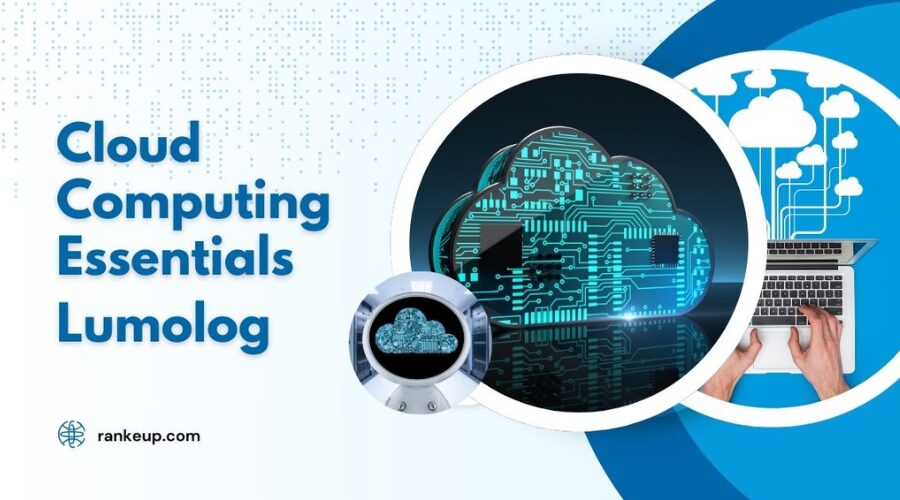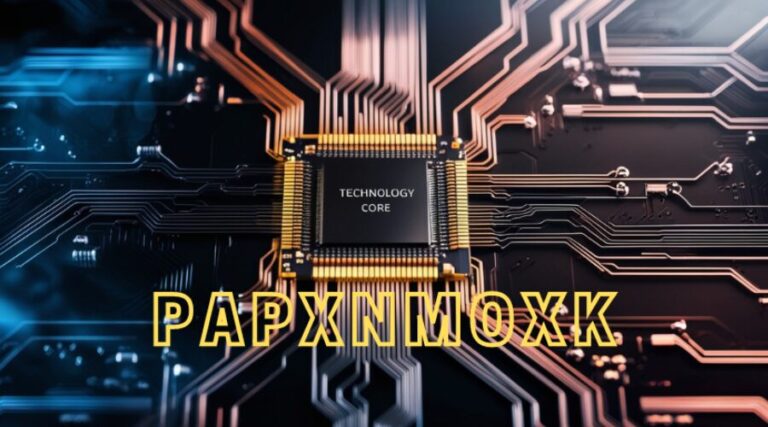Cloud Computing Essentials Lumolog, History of Cloud Computing & More
Introduction to Cloud Computing Essentials Lumolog.
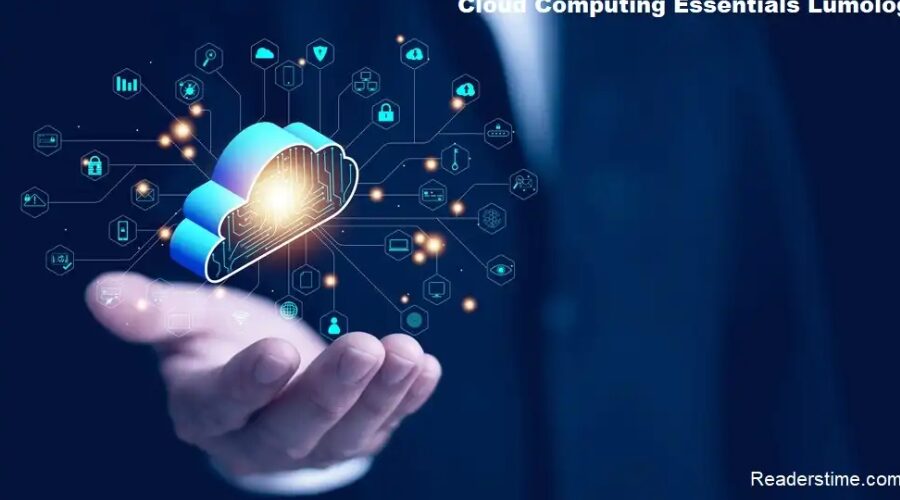
Lumolog offers a high-level cloud-based processing administration that embodies the center standards of distributed computing: quick advancement, adaptable assets, and adaptability. As opposed to expecting clients to put resources into their own actual framework or server farms, Lumolog gives an extensive set-up of registering assets over the web.
At its pith, distributed computing includes conveying different registering administrations — like servers, stockpiling, data sets, systems administration, programming, and investigation — through the web. This approach permits associations to sidestep the intricacies of purchasing and keeping up with actual equipment. All things considered, they can get to these assets on request, paying just for what they use, similar to having a virtual server farm accessible at whatever point required.
What is Cloud Computing?
Distributed computing is a technique for conveying figuring administrations — including servers, stockpiling, information bases, systems administration, programming, and investigation — over the web. Rather than keeping up with the actual framework on location, organizations can get to and deal with these assets on the web.
This model gives a few benefits:
Adaptability: Effectively change assets in light of current necessities.
Cost Reserve funds: Pay just for what you use, without forthright interests in equipment.
Adaptability: Immediately increase assets or down as your prerequisites change.
Remote Access: Access administrations from anyplace with a web association.
Distributed computing improves on tasks and offers organizations a flexible answer for handling different IT needs effectively.
History of Cloud Computing: Past, Present, and Future
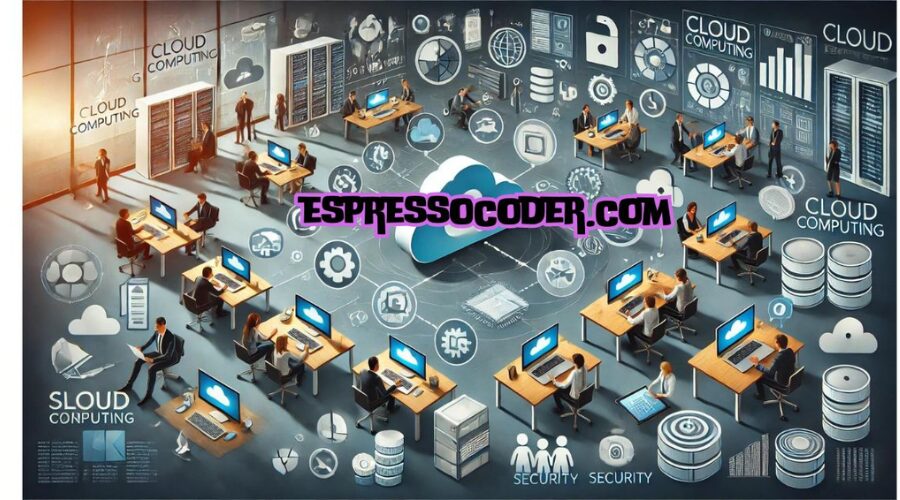
The starting points of distributed computing are discussed, with different trailblazers adding to the idea. Some follow it back to J.C.R. Licklider, who imagined an “Intergalactic PC Organization” during the 1960s, going for the gold, shared electronic asset. Others credit Apple engineers Andy Hertzfeld and Bill Atkinson, who in 1990 with their organization General Sorcery, fostered the TeleScript stage. No matter what its starting points, distributed computing has developed into a key part of present day innovation, assuming an essential part in information capacity, correspondence, and security.
How to Get Started with Lumolog for Your Business
Getting everything rolling with the Lumolog cloud stage is direct and easy to use. Here is a speedy manual for assist you with exploring the interaction:
Make Your Lumolog Record: Start by enrolling for a Lumolog account. The sign-up process is straightforward and will get you positioned to investigate every one of the elements the stage offers.
Pick the Right Bundle: When enlisted, select the bundle that best meets your requirements. Lumolog offers a scope of choices, so you can pick the one that lines up with your prerequisites and financial plan.
Investigate the Easy to understand Point of interaction: Really get to know Lumolog’s instinctive point of interaction. It’s intended to make the board simple, so you can rapidly find and use the elements you want.
Move Your Information: Utilize Lumolog’s consistent relocation innovation to move your information to the cloud. This cycle is smooth and effective, guaranteeing that your data is safely moved without problem.
Appreciate Dependable Capacity: Exploit Lumolog’s solid stockpiling arrangements. With the cloud, your information will constantly be available and safeguarded, giving inner harmony and adaptability.
By following these means, you’ll be well en route to utilizing Lumolog’s cloud administrations to upgrade your activities and smooth out your computerized needs.
The Significance of Cloud Computing for the Modern World

In the present high speed computerized scene, distributed computing has turned into a foundation of current business tasks. It gives amazing adaptability and versatility, empowering organizations to investigate new arrangements and develop effortlessly. The pith of distributed computing lies in its capacity to offer high level registering assets over the Web, permitting organizations to get to these apparatuses on request. This model requires insignificant forthright venture, making it a savvy choice for getting refined innovation without huge introductory costs.
Understanding Lumolog
What is Lumolog?
Lumolog is a state of the art distributed computing stage intended to meet an extensive variety of business needs. Whether you’re running a little startup or a huge undertaking, Lumolog offers thorough computerized arrangements custom-made to your necessities.
Key Features of Lumolog

While many cloud administrations offer comparative essentials, Lumolog stands apart with its unmistakable highlights:
Easy to understand Connection point: Exploring and dealing with your cloud assets is clear and instinctive.
High level Security: Guarantees vigorous information insurance with first class encryption and severe consistency with security norms.
Adaptability: Effectively change your assets up or down in view of your business needs.
Combination Capacities: Flawlessly associates with different outsider arrangements and administrations to improve your cloud insight.
Cloud Services and Deployment Models
Types of Cloud Services
Framework as a Help (IaaS): Gives virtualized figuring assets like servers, stockpiling, and systems administration over the web. Clients can deal with these assets as per their necessities without agonizing over the basic actual equipment.
Stage as a Help (PaaS): Offers an improvement stage and devices for making, testing, and conveying applications. Designers can zero in on coding and building programming while the stage handles the foundation and basic programming.
Programming as a Help (SaaS): Conveys programming applications over the web on a membership premise. Clients can get to these applications through an internet browser without expecting to introduce or keep up with programming on their neighborhood gadgets.
Cloud Deployment Models
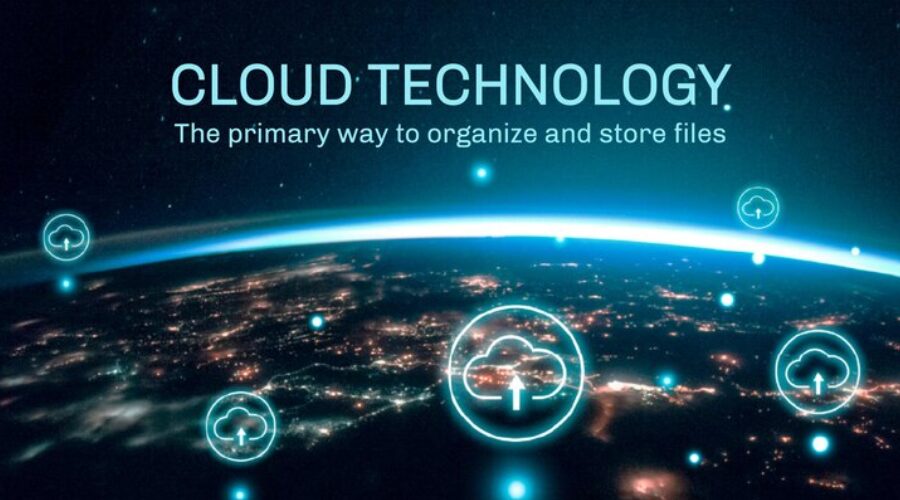
Public Cloud: Oversaw by outsider suppliers, this model offers processing assets over the web to numerous clients. Ideals for organizations need adaptable and savvy arrangements.
Confidential Cloud: Devoted exclusively to one association, this model gives more prominent control and security. It
Choosing the Right Cloud Solution for Small Businesses
Picking the Right Cloud Answer for Your Private venture
Choosing the best cloud arrangement is fundamental for your independent venture, and there are a few brilliant choices accessible, each offering novel elements to take special care of various requirements. Here is a glance at a portion of the top cloud administrations:
Amazon Web Services (AWS)
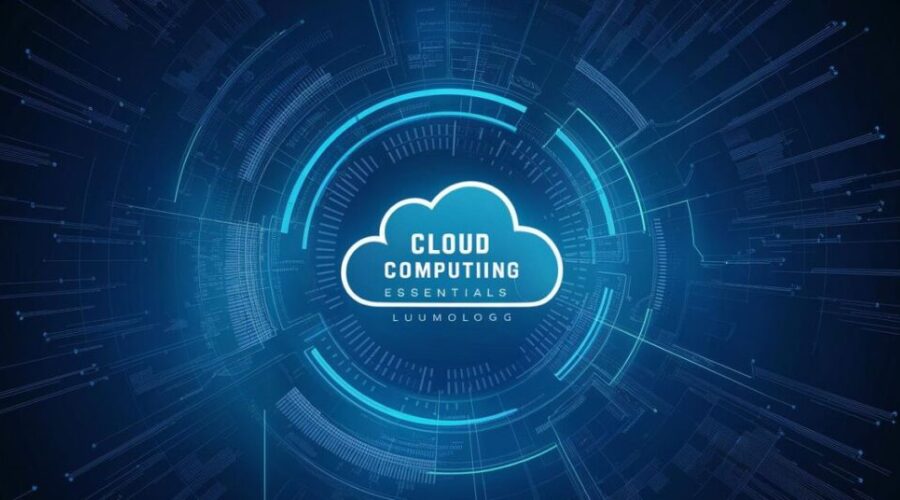
AWS is eminent for its broad and easy to understand administrations. It succeeds in consistency, information protection, and security, giving a versatile and secure climate for your business information. AWS is a strong decision for private companies looking for dependable framework insurance.
Google Cloud Hosting
Google Cloud Facilitating stands apart for major areas of strength for its, security, and persistently extending network. It offers an adaptable and hearty stage for private ventures, guaranteeing protected and superior execution distributed computing.
Microsoft Azure
Microsoft Sky blue is known for its speed, adaptability, and expansive scope of administrations. It gives different instruments and assets to upgrade your cloud climate, making it simpler for private ventures to successfully send and oversee applications.
Dropbox

Dropbox is all around respected for its record sharing, synchronization, and reinforcement capacities. Its usability and similarity with different gadgets and stages make it a famous decision for information capacity and dividing between private ventures.
OpenDrive
OpenDrive offers a flexible cloud arrangement with highlights like hotlinking and encryption. It upholds different gadgets and improves on information the board and record sharing, making it a commonsense choice for independent ventures.
While picking a cloud administration, consider factors like convenience, financial plan, information security, and versatility. The right cloud arrangement will line up with your business needs and assist you with accomplishing your objectives proficiently.
Cloud Computing Essentials: Unlock Benefits
Distributed computing Fundamentals: Opening the Advantages
Welcome to our investigation of distributed computing, where we’ll plunge into its basics and the way that it can change your business. In the present computerized age, distributed computing has turned into an imperative device for associations of all sizes and areas.
Distributed computing includes conveying different registering administrations over the web. This implies organizations can get to assets like capacity, servers, data sets, programming, and investigation without requiring their own actual foundation. By embracing cloud-based arrangements, organizations can smooth out tasks, help efficiency, and remain ahead in a cutthroat scene.
We should investigate the critical benefits that distributed computing brings to organizations:
Key Takeaways:
Expanded Effectiveness: Distributed computing takes into account on-request assignment of assets, empowering organizations to utilize precisely the exact thing they need when they need it, upgrading generally speaking proficiency.
Cost Reserve funds: By moving to cloud administrations, organizations can keep away from heavy interests in equipment and support, bringing about tremendous expense decreases.
Versatility: Cloud arrangements effectively scale with your business, adjusting to development and fluctuating requests without the requirement for significant framework changes.
Admittance to Advancement: The cloud gives admittance to state of the art innovations and apparatuses, offering chances to try and improve.
Upgraded Information Security: Cloud administrations further develop information reinforcement, debacle recuperation, and business congruity, it is shielded to guarantee that your basic data.
In the accompanying segments, we’ll cover the center ideas of distributed computing, offer direction on the most proficient method to carry out it in your business, examine security and information assurance, and show how distributed computing can change your tasks. We should leave on this astonishing excursion together!
Different Types of Cloud Computing Models
Distributed computing gives three essential kinds of administrations, each taking special care of various requirements and functionalities:
Foundation as a Help (IaaS): With IaaS, clients can get to and oversee virtualized registering assets over the web. This incorporates servers, stockpiling, and systems administration, which can be scaled by request. Rather than putting resources into actual equipment, organizations can lease these assets, empowering them to deal with different jobs proficiently and deftly.
Stage as a Help (PaaS): PaaS offers a complete climate for engineers to fabricate, convey, and oversee applications. It gives both the equipment and programming required for advancement, including instruments and structures, which works on the creation and organization process. This permits designers to zero in on coding and application rationale without agonizing over basic foundation.
Programming as a Help (SaaS): SaaS conveys prepared-to-utilize applications over the web. Clients can get to these applications through an internet browser, paying a membership charge instead of buying and introducing programming on their own frameworks. This model takes into account simple updates and upkeep while guaranteeing that clients approach the most recent highlights and security enhancements.
Every one of these administrations assumes an essential part in the cloud biological system, offering organizations adaptability, cost reserve funds, and the capacity to scale tasks on a case by case basis.
Best Practices and Tips
Top Tips for Utilizing Lumolog Effectively
1;Training and Familiarization
Instruct Your Group: Ensure everybody associated with Lumolog is prepared on its critical elements and functionalities. Understanding how to make, make due, and enhance cloud assets will assist your group with utilizing Lumolog to its maximum capacity.
Fundamental Undertakings: Show your group how to deal with significant errands, for example, upgrading costs, overseeing execution, and answering framework cautions.
Remain Refreshed: Routinely illuminate your group about any new elements or enhancements to stay up with the latest.
2;Personalize Your Settings:
Warnings: Set up redid cautions for basic occasions like asset scaling and security issues to remain educated and responsive.
Asset Portion: Change asset settings to match your particular responsibility needs, guaranteeing ideal execution and cost-proficiency.
Charging Inclinations: Arrange charging cautions and reports to follow your costs and stay away from shocks.
3;Leverage Automation Tools
Booked Undertakings: Use robotization for routine activities like reinforcements, scaling, and support to save time and lessen manual mistakes.
Strategy Based Activities: Carry out rules for programmed scaling, load adjusting, and safety efforts to smooth out tasks and improve framework flexibility.
Script Execution: Use custom contents for explicit errands, taking into account more prominent control and customization of your cloud climate.
By following these tips, you can make the most out of Lumolog, guaranteeing it meets your business needs successfully and proficiently.
Cloud Computing Challenges Let‘s See!
Security Worries: While cloud suppliers execute solid safety efforts, it’s essential for organizations to lay out their own information insurance methodologies. This includes defending against potential information breaks and guaranteeing secure information transmission to safeguard delicate data.
Free time and Administration Interruptions: Cloud administrations can sometimes confront free time or disturbances. It’s essential to evaluate the unwavering quality of your cloud supplier and affirm that they offer adequate help and pay for administration interference to limit the effect on your tasks.
Information Security and Consistency: Complying to information insurance guidelines, like GDPR or HIPAA, is fundamental for keeping up with information protection. Guarantee that your cloud supplier agrees with these guidelines and gives answers for help you oversee and safeguard your information actually.
Seller Lock-In: Depending on a solitary cloud supplier can prompt merchant security, where it becomes challenging to switch suppliers or coordinate with different administrations. To stay away from this, consider procedures, for example, taking on a multi-cloud approach or guaranteeing that your information and applications are compact between various suppliers.
Facts:
- Lumolog Overview:
- Lumolog is a cloud-based platform offering various computing services including servers, storage, databases, and more.
- The platform emphasizes speed, scalability, and flexibility, allowing users to avoid investing in physical infrastructure.
- Cloud Computing Definition:
- Cloud computing provides on-demand access to computing resources over the internet, such as servers, storage, and applications.
- Benefits include cost savings, scalability, flexibility, and remote access.
- Historical Context:
- The concept of cloud computing traces back to the 1960s with J.C.R. Licklider’s vision of an “Intergalactic Network.”
- Other early contributions include Apple’s TeleScript platform developed in 1990.
- Cloud Service Models:
- IaaS (Infrastructure as a Service): Provides virtualized computing resources over the internet.
- PaaS (Platform as a Service): Offers a platform for developers to build, test, and deploy applications.
- SaaS (Software as a Service): Delivers software applications over the web on a subscription basis.
- Cloud Deployment Models:
- Public Cloud: Managed by third-party providers, offering resources to multiple clients.
- Private Cloud: Dedicated to a single organization, providing greater control and security.
- Top Cloud Providers:
- Amazon Web Services (AWS): Known for its extensive services and security features.
- Google Cloud Hosting: Offers strong security and performance.
- Microsoft Azure: Recognized for its flexibility and broad range of services.
- Dropbox: Popular for file sharing and synchronization.
- OpenDrive: Provides flexible cloud storage solutions.
- Key Benefits of Cloud Computing:
- Increased efficiency
- Cost savings
- Scalability
- Access to advanced technology
- Enhanced data security
- Challenges in Cloud Computing:
- Security concerns
- Downtime and service disruptions
- Compliance with data protection regulations
- Vendor lock-in issues
Summary:
Lumolog is a modern cloud computing platform that offers a range of services including virtual servers, storage, and databases, designed to help businesses scale and manage their IT needs efficiently. Cloud computing, as a model, provides significant advantages such as cost savings, flexibility, and remote access by delivering computing resources over the internet rather than requiring physical infrastructure. The history of cloud computing includes contributions from visionaries like J.C.R. Licklider and early tech developments from Apple.
Different cloud service models cater to various business needs:
- IaaS provides fundamental computing resources.
- PaaS offers a platform for developing applications.
- SaaS delivers software applications directly to users.
Deployment models include public clouds, which are shared among multiple clients, and private clouds, which are dedicated to a single organization for enhanced control and security.
Despite its benefits, cloud computing faces challenges such as security concerns, potential downtime, compliance issues, and vendor lock-in. Effective use of cloud services requires understanding these aspects and applying best practices to mitigate risks.
FAQs:
1. What is Lumolog?
- Lumolog is a cloud-based platform offering comprehensive computing services such as virtual servers, storage, and databases, designed to meet various business needs.
2. How does cloud computing benefit businesses?
- Cloud computing provides cost savings, scalability, flexibility, and remote access to computing resources, eliminating the need for physical infrastructure investments.
3. What are the main types of cloud services?
- The main types are:
- IaaS (Infrastructure as a Service)
- PaaS (Platform as a Service)
- SaaS (Software as a Service)
4. What are the differences between public and private clouds?
- Public Cloud: Managed by third-party providers and shared among multiple clients.
- Private Cloud: Dedicated to a single organization, offering greater control and security.
5. What are some top cloud providers?
- Notable cloud providers include Amazon Web Services (AWS), Google Cloud Hosting, Microsoft Azure, Dropbox, and OpenDrive.
6. What challenges are associated with cloud computing?
- Challenges include security concerns, potential service disruptions, compliance with data protection regulations, and issues related to vendor lock-in.
7. How can businesses get started with Lumolog?
- Businesses can get started by creating a Lumolog account, selecting the appropriate package, exploring the user interface, migrating data, and utilizing Lumolog’s storage solutions.
Read More Information About Technology At latestrular
